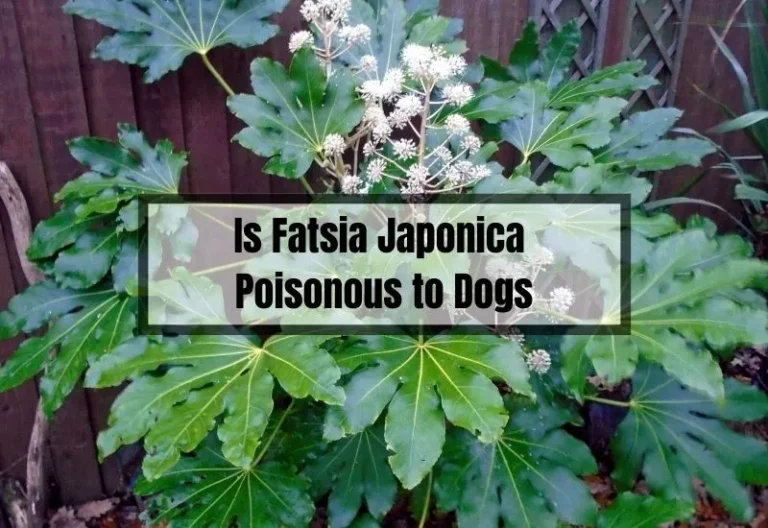Christmas Cactus: A Festive Addition to Your Home Decor
If you’re looking for a festive and low-maintenance houseplant to add to your holiday decor, look no further than the Christmas cactus. This unique succulent is known for its vibrant, tubular flowers that bloom in shades of pink, red, white, and purple during the winter months.
Despite its name, the Christmas cactus is not actually a cactus, but rather a member of the Schlumbergera genus, native to the rainforests of Brazil.

One of the things that makes the Christmas cactus such a popular houseplant is its ease of care. Unlike some other plants, it doesn’t require a lot of attention or fuss to thrive.
With the right conditions, it can bloom for weeks or even months at a time, bringing a touch of holiday cheer to your home. Whether you’re a seasoned plant parent or a beginner, the Christmas cactus is a great choice for anyone looking to add a pop of color to their indoor space.
Key Takeaways
- The Christmas cactus is a low-maintenance succulent known for its vibrant, tubular flowers that bloom during the winter months.
- Despite its name, the Christmas cactus is not actually a cactus, but rather a member of the Schlumbergera genus, native to the rainforests of Brazil.
- With the right conditions, the Christmas cactus can bloom for weeks or even months at a time, making it a festive and easy-to-care-for addition to your holiday decor.
Origins and History

If you’re a fan of the Christmas cactus, you might be interested to know that this plant has an interesting history and origin story.
Native Habitat
The Christmas cactus, also known as Schlumbergera, is native to the tropical rainforests of Brazil. It was first discovered in the late 1800s by a French botanist named Charles Lemaire.
Symbolism and Traditions
Over time, the Christmas cactus has become associated with the holiday season. It’s believed that this plant’s association with Christmas began in the 1800s when a story circulated about a poor Mexican girl who had no gift to give to the baby Jesus. According to the story, an angel appeared and told her to gather some weeds from the side of the road. When she brought the weeds to the church and placed them at the altar, they miraculously blossomed into beautiful flowers, which came to be known as “Flores de Noche Buena” or “Flowers of the Holy Night.”
Today, the Christmas cactus is a popular holiday plant that is often given as a gift or used to decorate homes. It’s also associated with the winter season and is known for its bright, colorful blooms that can last for weeks.
Whether you’re a fan of the Christmas cactus for its symbolism or simply love the way it looks, there’s no denying that this plant has a fascinating history and a unique story.
Botanical Description

If you’re looking for a unique and beautiful plant to add to your collection, the Christmas cactus is a great choice. This plant is known for its vibrant and colorful flowers that bloom around Christmastime, making it a popular choice for holiday decorations. Here is what you need to know about the botanical description of this plant.
Plant Characteristics
The Christmas cactus, also known as Schlumbergera, is a type of cactus that is native to the rainforests of Brazil. Unlike most cacti, the Christmas cactus does not have spines. Instead, it has flattened, leaf-like stems that are segmented and grow in a cascading pattern. The stems can be green, red, or yellow, depending on the variety of the plant.
The Christmas cactus is an epiphyte, which means that it grows on other plants without harming them. In the wild, it can be found growing on trees or rocks, and it gets its nutrients from the surrounding environment. When grown indoors, the Christmas cactus can be planted in a well-draining soil mix that is rich in organic matter.
Flower Features
One of the most striking features of the Christmas cactus is its flowers. The flowers bloom in a wide range of colors, including pink, red, white, orange, and purple. The flowers are tubular in shape and have a waxy texture. They typically bloom for several weeks around Christmastime, but with proper care, the plant can bloom at other times of the year as well.
To encourage your Christmas cactus to bloom, you should provide it with the right growing conditions. The plant needs bright, indirect light and cool temperatures (around 60-65 degrees Fahrenheit) to trigger blooming. You should also make sure the plant is well-watered but not overwatered, as this can cause the stems to rot.
Overall, the Christmas cactus is a beautiful and unique plant that is sure to add a festive touch to your home during the holiday season. With the right care, you can enjoy its colorful blooms year after year.
Care Guide
Taking care of your Christmas cactus is easy and straightforward. Here are some simple tips to help you keep your plant healthy and thriving.
Watering Requirements
When it comes to watering your Christmas cactus, it’s important to strike a balance between under and overwatering. Overwatering can lead to root rot, while underwatering can cause the plant to wilt and die.
A good rule of thumb is to water your cactus when the top inch of soil feels dry to the touch. During the growing season, which is typically from spring to early fall, you should water your cactus more frequently, about once a week. During the dormant season, reduce watering to once every two weeks.
Light and Temperature
Christmas cacti prefer bright, indirect light, but they can also tolerate some shade. Direct sunlight can scorch the leaves, so it’s best to place your cactus in a location where it can receive diffused light.
As for temperature, Christmas cacti like to be kept in a warm, humid environment. Ideally, the temperature should be between 60°F to 70°F.
Soil and Fertilization
Christmas cacti like well-draining soil that is slightly acidic. You can use a commercial cactus mix or create your own by mixing equal parts of potting soil, perlite, and sand.
Fertilize your cactus once a month during the growing season with a balanced, water-soluble fertilizer. Once buds have formed, switch to a high-potassium fertilizer to encourage blooming.
Pruning and Maintenance
To keep your Christmas cactus looking its best, you should prune it regularly. Pruning not only helps to keep the plant compact, but it also encourages branching and more blooms.
You can prune your cactus in the spring after it has finished blooming. Simply pinch off the tips of the stems to promote branching. Additionally, you should remove any dead or diseased stems as soon as you notice them.
Propagation Methods
If you want to grow more Christmas cacti, you can propagate them using stem cuttings or seeds. Both methods are relatively easy and can be done at home.
Stem Cuttings
Propagating Christmas cactus using stem cuttings is the most common method. To do this, take a healthy stem cutting from the parent plant using clean scissors or shears.
Make sure the cutting is at least two or three joined segments long. Allow the cutting to dry for a few hours before planting it in a well-draining soil mix. Water the soil and keep it moist until the cutting starts to grow roots. After that, water the plant only when the soil is dry to the touch.
Seeds
If you want to grow Christmas cacti from seeds, you can start by collecting the seeds from a mature plant. Sow the seeds in a well-draining soil mix and keep it moist until the seeds germinate. It may take a few weeks for the seeds to sprout. Once they do, water the seedlings only when the soil is dry to the touch.
Propagation can be a fun and rewarding way to expand your collection of Christmas cacti. With a little patience and care, you can grow new plants from stem cuttings or seeds.
Common Problems
If you’re having trouble with your Christmas cactus, you’re not alone. Here are some of the most common problems you may encounter and how to address them.
Pest Infestations
Pests such as mealybugs and spider mites can infest your Christmas cactus, causing damage and stunting growth. Signs of an infestation include white, cottony patches on the leaves and stems or spider-like webs.
To get rid of these pests, you can try washing your plant with a solution of water and mild soap or using an insecticidal soap. Be sure to isolate the affected plant from your other plants until the infestation is under control.
Diseases
Improper watering or poor drainage can cause root rot or other fungal diseases to develop in your Christmas cactus. Symptoms of disease include wilting or yellowing leaves, brown spots, or a soft, mushy stem.
To prevent disease, make sure your plant is planted in well-draining soil and only water when the top inch of soil is dry. If you suspect your plant has a disease, remove any affected parts and treat with a fungicide.
Environmental Stress
Changes in temperature, light, or humidity can stress your Christmas cactus, causing it to drop leaves or fail to bloom. Make sure your plant is kept in a location with consistent temperatures and bright, indirect light.
Keep the soil moist but not waterlogged, and avoid placing your plant near drafts or heat sources. If your plant is still struggling, try fertilizing with a balanced fertilizer every two weeks during the growing season.
Blooming Cycle
If you want your Christmas cactus to bloom, you need to understand its blooming cycle. The Christmas cactus typically blooms once a year, usually around the holiday season. The blooming period can last anywhere from a few weeks to a few months.
Inducing Blooms
To induce blooms, you need to provide the right conditions for your Christmas cactus. Start by limiting the amount of water the plant receives.
This generally takes place sometime during fall, usually around October or the first part of November. During this period, reduce the amount of water you give your Christmas cactus to encourage it to enter a dormant period.
In addition to reducing water, you should also provide your Christmas cactus with a period of darkness. This means keeping it in a dark room for around 12-14 hours a day for several weeks. This will help initiate the blooming process.
After-Bloom Care
Once your Christmas cactus has finished blooming, it’s important to take proper care of it. This will ensure that it stays healthy and is ready to bloom again next year. Start by providing it with the right amount of water. During the growing season, make sure to keep the soil moist but not waterlogged.
You should also fertilize your Christmas cactus every two weeks during the growing season. Use a balanced fertilizer that is high in phosphorus to encourage blooming. Finally, make sure to keep your Christmas cactus in a bright, indirect light. Too much direct sunlight can burn the leaves and cause damage to the plant.
Varieties and Selection
Christmas cacti come in a variety of colors and sizes, making them a popular choice for holiday decorations. When selecting a Christmas cactus, you’ll want to consider the color and size of the blooms, as well as the overall health of the plant.
Popular Cultivars
Some of the most popular cultivars of Christmas cacti include:
- Schlumbergera x buckleyi: This is the most common Christmas cactus variety. It has long, flat stems with rounded edges and bright pink, red, or white blooms.
- Schlumbergera truncata: This variety is also known as the Thanksgiving cactus because it blooms in late November. It has pointed stem edges and blooms in shades of pink, red, and white.
- Schlumbergera russelliana: This variety has elongated stem segments and blooms in shades of pink, red, and purple.
When selecting a Christmas cactus, look for a plant with healthy-looking leaves and stems. Avoid plants with yellowing or wilting leaves, as this could be a sign of disease or poor care.
Overall, Christmas cacti are a beautiful and low-maintenance addition to any holiday decor. With a little care and attention, your Christmas cactus can bloom for years to come.
Frequently Asked Questions
How do I ensure my Christmas cactus thrives indoors?
To ensure your Christmas cactus thrives indoors, make sure it’s placed in a well-lit area, but not in direct sunlight.
Keep the temperature between 60-70°F (15-21°C) and make sure the soil is well-draining. You can use a cactus mix or create your own by combining potting soil, sand, and perlite.
What’s the best time to move my Christmas cactus back inside?
The best time to move your Christmas cactus back inside is in early fall, before the temperature drops below 50°F (10°C).
This will give the plant time to adjust to its indoor environment before it starts to bloom.
What are the proper watering techniques for a Christmas cactus?
Water your Christmas cactus when the top inch of soil is dry to the touch. Make sure to water thoroughly, allowing excess water to drain out of the bottom of the pot.
Avoid getting water on the leaves or stem of the plant, as this can cause damage. During the winter months, reduce watering to once every 3-4 weeks.
Can you give tips on propagating a Christmas cactus?
To propagate a Christmas cactus, take a cutting of a stem segment with at least 2-3 leaf nodes.
Let the cutting dry for a few days, then plant it in a well-draining soil mix. Keep the soil moist and place the cutting in a bright, indirect light. It should root in 2-4 weeks.
How can I encourage my Christmas cactus to bloom?
To encourage your Christmas cactus to bloom, make sure it’s placed in a cool (50-55°F or 10-13°C), dark location for 12-14 hours a day for 6-8 weeks.
This will simulate the conditions the plant would experience in its native environment, and should trigger blooming. Once buds appear, move the plant to a brighter location.
What are the different color varieties of Christmas cacti?
Christmas cacti come in a variety of colors, including pink, red, white, and yellow. Some varieties may have bi-colored or striped flowers. The color of the flowers is determined by the genetics of the plant, and cannot be changed.





